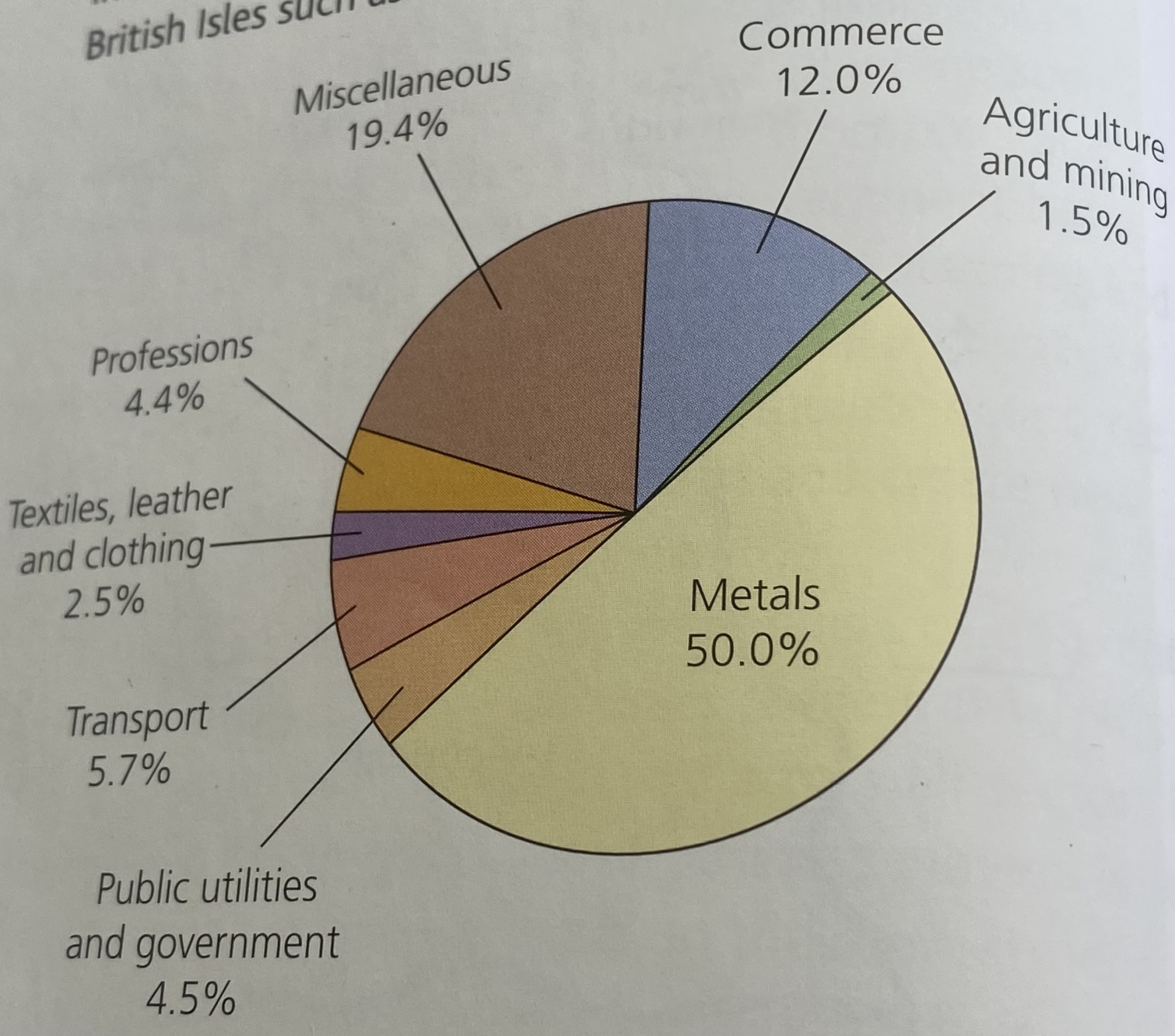Birmingham up to de-industrialisation
1/21
Earn XP
Description and Tags
Name | Mastery | Learn | Test | Matching | Spaced |
|---|
No study sessions yet.
22 Terms
1951 population
1.1 million
Industrial Revolution
-gun, jewellery, button and brass industries dominated
-Cadbury family set up Bournville factory and model village for workers
-Lloyd and Midlands banks set up mid 19th century
-lay at heart of the national canal network
-London to bham railway opened 1838
Vehicle industry growth examples
-Austin car plant in Longbridge
-Dunlop tyre company
When did the Austin car plant open?
1906
When did the Dunlop tyre company open?
1917
How many people did the Dunlop company employ by the 1950s?
10,000
Chemical industry example
Bakelite
Why did B’ham survive the Great Depression (inter-war years) relatively well?
-diverse metal-working industries
-continuos population growth- natural and immigration from rural areas and British Isles eg Ireland
Employment in Bham conurbation early 1950s

Demographics up until 1950s
-mostly white
-employment dominated by males- 60% had skilled jobs eg precision engineers
Unemployment in 1950s
Below 1%- below UK avg (~2%)
1982 unemployment
19.4% (UK avg 13%)
Earnings change de-ind
Fell from highest in Uk to almost lowest of any region
Share of knowledge intensive jobs 1951 vs 2013
2.5% vs 12%
Metal manufacturing % of jobs 1951 vs 1981 vs 2013
22% vs 12% vs >5%
Players in de-ind
-Arab-Israeli war 6th-25th oct 1973
-recession- oil crisis 1973
-car industry moving elsewhere- particularly Japan
-frequent strikes
-houses destroyed
Arab-Israeli war
-6th-25th oct 1973
-many western nations supported Israel
-OPEC (Organisation of Petroleum Exporting Countries) was dominated by Arab countries and they responded to the Western threat by using oil as a weapon
-embargo on oil supplies increased oil price by about tenfold- $3 a barrel to $12 a barrel
Car manufacturing
-TNCS- cheaper abroad
-Japanese (Nissan, Toyota) seen as more reliable, better value and more fuel efficient
-some overseas car manufacturers set up in UK (no tariffs unlike other EU countries) but not West Midlands —> govt grants favoured places even worse off
Strikes
-less attractive to potential investors
-British Leland
Housing
-city council cleared slums- ‘comprehensive redevelopment programme’. Destroyed lots of SMEs (small and medium enterprises) in the process- new premises unaffordable
Housing change
-in WW2 5000 houses destroyed. 110k houses considered sub-standard
-400 tower blocks built in 50s and 60s replaced slums. Total of 81k new homes built 1945-70
-redistributes the population- housing built on rural-urban fringe (slums in centre)
-new towns set up eg Redditch
-economy became service based + lots of commuters
-green belt set up to stop urban sprawl- areas like Solihull good transport, v expensive
Demographic change
-lots of migration from Caribbean, South Asia and Far East after WW2. Low skilled jobs eg taxi drivers
-built env- Birmingham Central Mosque, money transfer services for remittances, Balti Triangle- Indian restaurants, fabrics
-youthful popu- 38% of popu 24 or younger (national avg 31%)